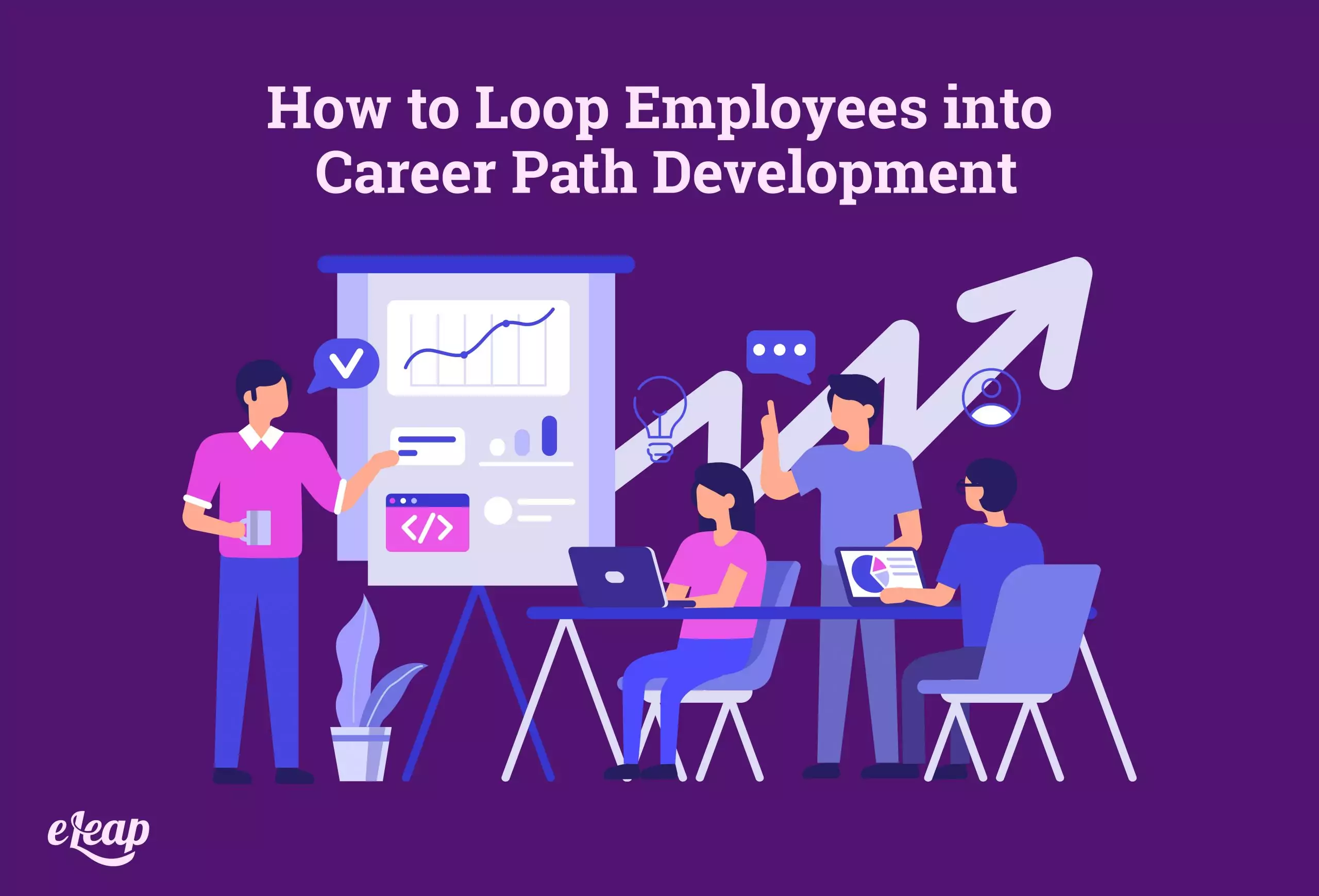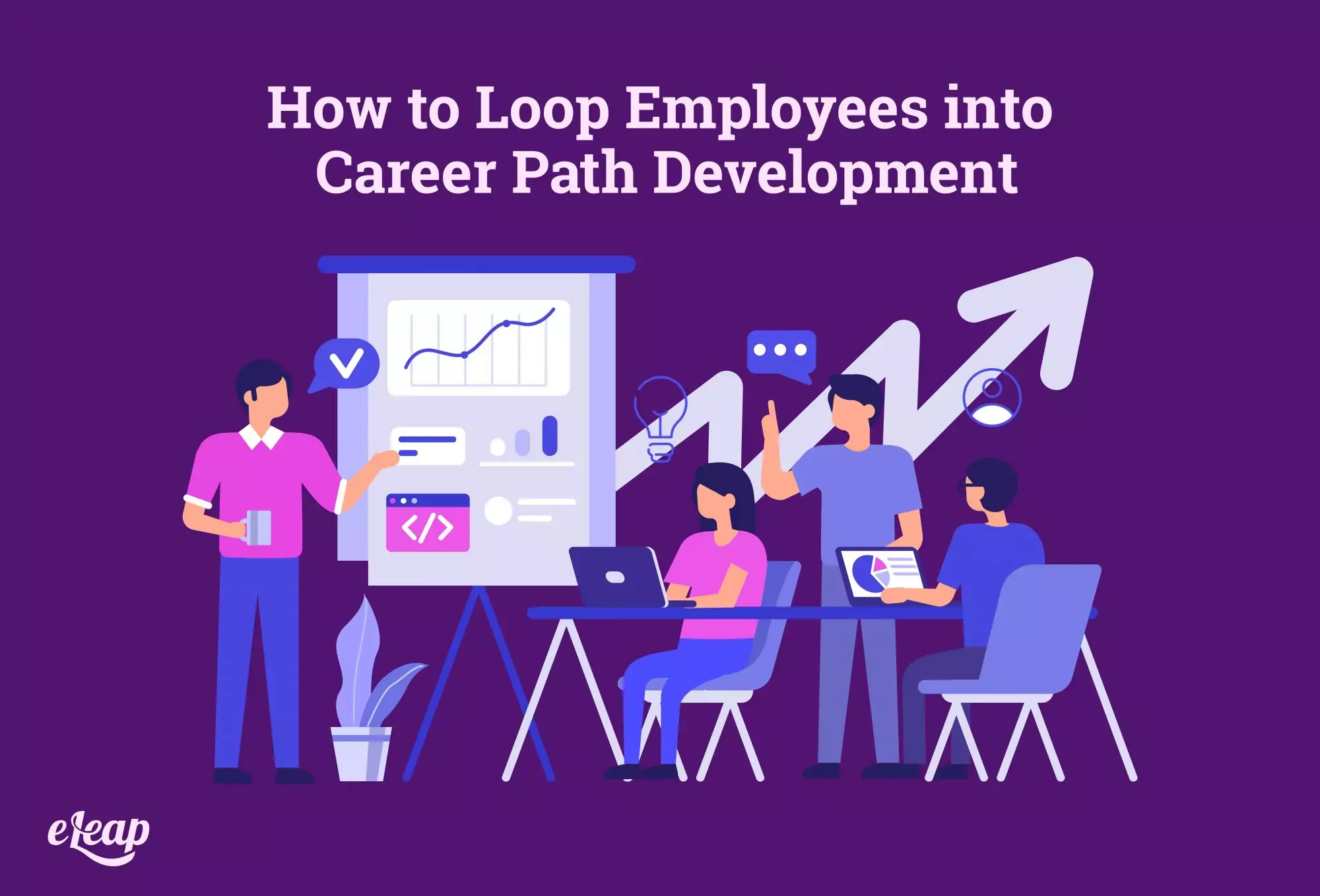How to Loop Employees into Career Path Development

The employment landscape has changed a lot over the past few decades. We’ve seen the end of an era – when employees worked for one employer for decades, to eventually retire with a pension. We’ve seen the rise of something new and arguably better – an era where employees are unafraid to jump ship if they feel there is something better out there. The traditional career path development life cycle has been upended in many industries.
Of course, that shift sometimes has negative connotations. Employees have “lost loyalty”, it’s claimed. Employee-employer loyalty was never truly that widespread. Most employees worked for the same employer because they had little other option. Today, that is not the case.
Employees will go in search of those proverbial greener pastures if they feel they are not being utilized correctly, if they are being treated unfairly, if their compensation is too low, and, perhaps most importantly, if they feel that their career’s future is in jeopardy.
As an HR professional, it is your responsibility to stem the tide. One way to do that is to loop employees into their own career path development. When provided with good development options, most employees are happy to stay with the same employer. In truth, they do not wish to leave.
Turnover is as stressful and problematic for workers as it is for the companies they leave. However, as pointed out in a study conducted by Gallup, job advancement for 93% of the American workforce requires leaving one employer for another. And, because no one wants to be stuck in a dead-end job, you can count on your talent leaving to pursue better things unless you can provide them with a path toward advancement.
That leaves a large, looming question, though. How do you not only provide employees with a career path but involve them in the process? While it isn’t rocket science, achieving this goal does require following some specific steps.

It’s All About Them
The first thing to realize is that employee career path development is, well, all about the employee. Yes, the organization figures in there, too, but remember that if a path doesn’t appeal to an employee, no amount of perks or salary raises is going to make it palatable.
What this means is you need to start with the employee – a personalized, goal-based approach is crucial here. Where does the employee want to go in their career? What do they want to achieve? Once you have that information, you must connect it with your organization’s needs.
Conversations with employees can help surface the necessary information, but HR professionals must ask the right questions. Begin with the employee’s history – what have they achieved thus far? Where did they begin? What talents and interests have they built on and what skills have they learned along the way?
From that point, you must look toward the future. What are the organization’s needs moving forward? What talent needs to be in place for growth and a better ability to compete in your industry?
Finally, you need to peg an employee’s talents, interests, skills, and background to the organization’s needs. That intersection is the point of interface with the employee. Bring them into the conversation with a discussion about how their talents and skills can dovetail with the organization’s needs and what a potential career path might look like.
Find Unique Ways to Learn
Your LMS is central to developing talent and moving employees forward along a career path. However, it should not be the only learning and development tool. In fact, when you bring employees into the career path development process, it cannot be the only L&D tool or you risk disengagement.
To engage employees and bring them into the path development process, you must find unique ways for them to learn, grow, and develop. For instance, mentoring and shadowing opportunities provide them with the means not only to learn new skills but to gain critical insight into other positions within the organization, along with firsthand knowledge of how it will affect them personally.
In addition to mentoring and shadowing, stretch assignments can also be used to develop skills and acquaint employees with a possible career path. Finally, look for ways that the employee can work with newer people. This isn’t so much about their individual career path as it is about creating a company culture that values and expects development, rather than merely encourages it.
Create a Process
Without a defined career advancement process, your efforts may be ephemeral. There is no route set in stone, but there are some important pointers:
- The process should be based on employee input as much as anything else.
- The process should reward results.
- The process should engage with the employee and amplifies conversation surrounding their wants and needs, as well as how they want to help the company grow.
- The process should make it easy to track performance (particularly top talent).
- The process should promote diversity and create an equitable workplace.
Make Sure Advancement Isn’t Punishment
Shadowing, mentoring, training – it sounds great on paper. It’s all part of growth and development, right? Yes, but also no. The challenge here is that if you’re not also advancing the employee, what eventually happens is they become overloaded and what should be a reward instead becomes a punishment.
Look at it this way: if an employee’s core duties do not change, but they are continually saddled with new tasks (masquerading as learning opportunities), it does not really matter that those things are geared to foster career development. There are only so many hours in the day and people can be overloaded with learning just as easily as they can with other responsibilities.
Make sure that you are training and advancing people at the same time. Those new skills should come with raises, bonuses, and new titles. Otherwise, you are basically just getting extra work out of them without them enjoying any real benefits.
Building Them Up
In the end, looping employees into career path development is not all that difficult. It simply requires making them part of the conversation and remembering that while those positions are important to the company, it is ultimately the employee’s professional life that you’re talking about.